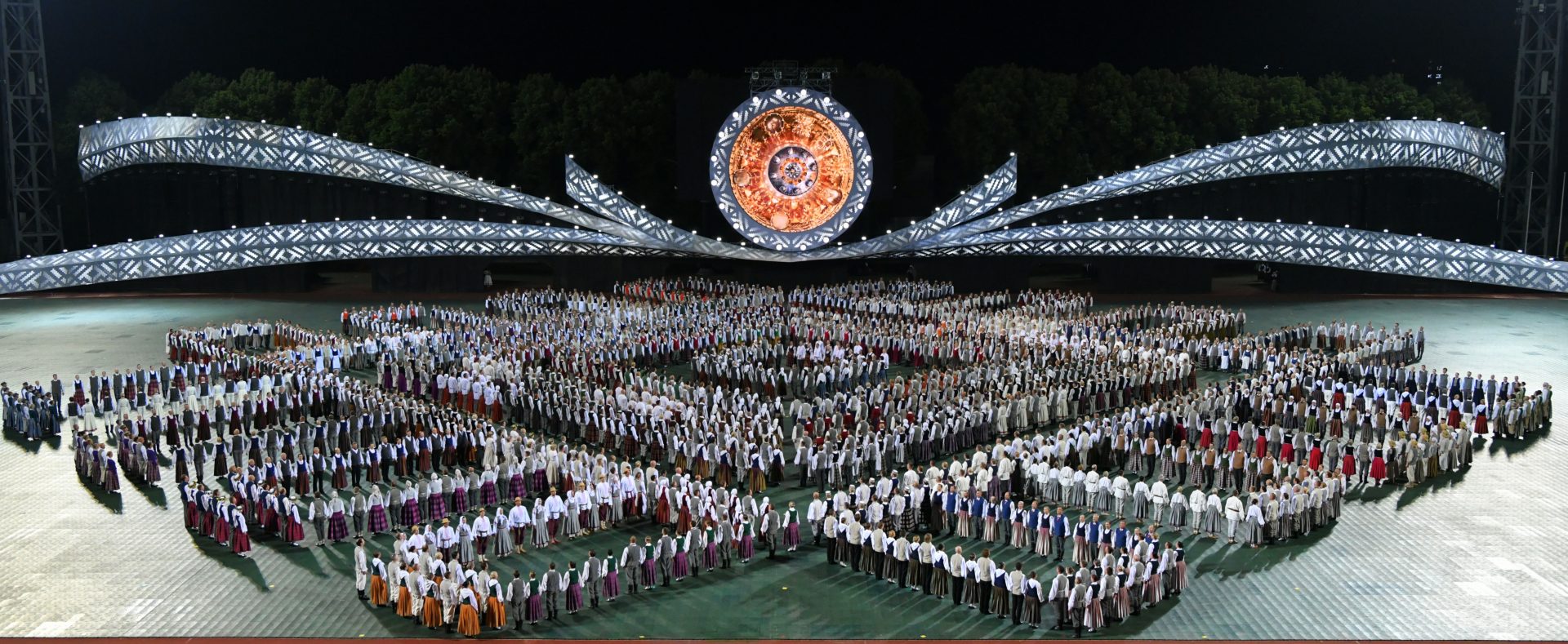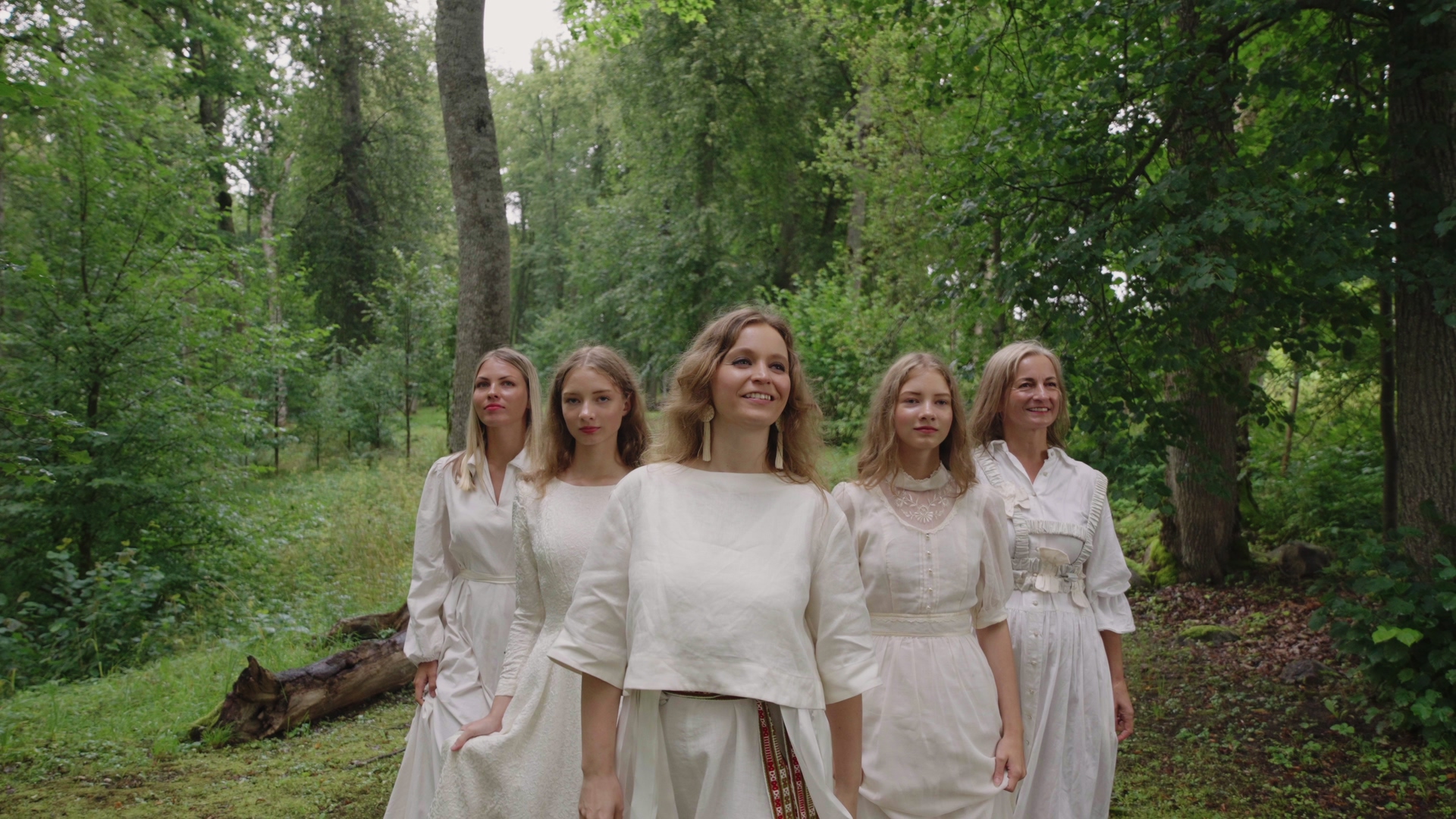If you’ve ever been to Latvia, chances are you’ve heard of the Latvian Song and Dance Festival – a national tradition that binds us to each other, our Baltic neighbours, and the cultural history of the region. With the XIII Latvian School Youth Song and Dance Festival coming up from 5 to 13 July, now’s the perfect time for a refresher.
The Latvian Song and Dance Festival

© Ilmārs Znotiņš / The National Cultural Centre of Latvia
The Origins of the Latvian Song and Dance Festival
The Latvian Song and Dance Festival is a cherished tradition that’s been part of Latvian life for more than 150 years. Its roots stretch back to early 19th-century Europe, where amateur choir festivals flourished. Inspired by this, Baltic German communities brought the idea to the Baltics, organising men’s choir events much like those in Austria, Switzerland, and Germany.
While the tradition faded elsewhere in Europe over time, in Latvia it took on a life of its own – becoming one of the most powerful expressions of national identity.
By the 1860s, Latvia’s a cappella singing movement was thriving. Singing societies sprang up across the country, yearning for a festival of their own. Regional events followed, growing year by year – and then, in the summer of 1873, the first All-Latvian Song Festival was held in Riga.
With over 1,000 singers and a 30-piece orchestra, it was the start of something monumental. Fast forward to the latest festivals, and there were more than 40,000 participants and half a million visitors. And it’s not just about singing anymore. Today’s Festival features dancers, musicians, folklore groups, applied folk arts, and even amateur theatre. It’s a full-spectrum celebration of Latvian creativity and spirit.
A Part of the Latvian Identity
The Latvian Song and Dance Festival is a celebration, but it is far from casual. The Dance Concert is a visual spectacle on every level. Zoom out, and thousands of dancers form shifting patterns – a living kaleidoscope of Latvian ethnic motifs. Mid-range reveals impeccable and powerful choreography. Up close: dazzling regional costumes, expressive movements, and smiling faces radiating joy and endurance even after hours of rehearsals.
Watch a close-up of a choir singer during the closing concert at Mežaparks Open-Air Stage, performing the Festival’s unofficial anthem “Saule, Pērkons, Daugava”. You’ll see focus in every muscle: perfect posture, crisp diction, unwavering tone. In their eyes – tears, pride, and the quiet intensity of years of effort converging in a perfect, shared moment.
Because singing and dancing together is more than performance for us – it’s part of our identity and independence, a unifying force. Singing our folk songs and the festivals were also a part of the Singing Revolution, the peaceful resistance movement that helped restore Baltic independence at the end of the 20th century. Even during censored festivals under Soviet occupation, the audience would demand the then prohibited “Gaismas pils” and stand up.
Diversity Within Unity
Participants come from all walks of life, including diaspora choirs and dance groups from over 20 countries. After the Second World War, when Latvians found themselves scattered across the globe, these communities refused to let their cultural heart stop beating. They began organizing their own festivals in the USA, Canada, and across Europe, proving that neither distance nor displacement could silence the songs that define who we are.
This year, the XIII Latvian School Youth Song and Dance Festival program even includes STEAM workshops. At first glance, it might seem like an unlikely match, but look closer, and you’ll find geometry, acoustics, structure, and serious planning behind every performance. The art of singing and dancing meets the science of movement, sound, and collaboration. Tradition, innovation and hard work are intertwined.
It’s no wonder, then, that the Latvian Song and Dance Festival – together with the corresponding Estonian and Lithuanian festivals – was inscribed by UNESCO in 2008 as a Masterpiece of the Oral and Intangible Heritage of Humanity and has also received the World Choir Peace Prize for the rich choral singing traditions in 2014.
